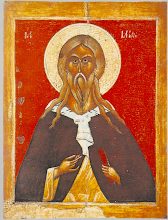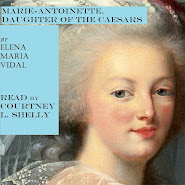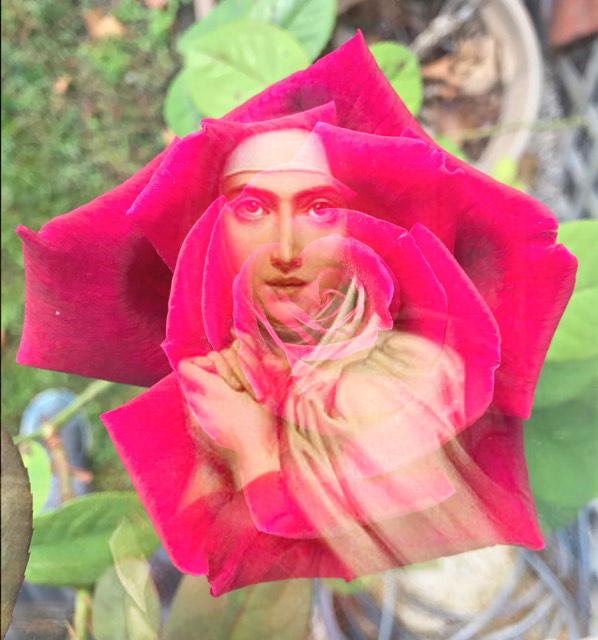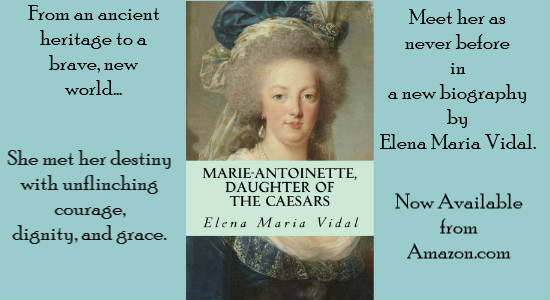On his feast day, some powerful thoughts from
St. John Paul II's 1999 "Letter to Artists":
Art must make perceptible, and as far as possible attractive, the world of the spirit, of the invisible, of God. It must therefore translate into meaningful terms that which is in itself ineffable. Art has a unique capacity to take one or other facet of the message and translate it into colours, shapes and sounds which nourish the intuition of those who look or listen. It does so without emptying the message itself of its transcendent value and its aura of mystery.
The Church has need especially of those who can do this on the literary and figurative level, using the endless possibilities of images and their symbolic force. Christ himself made extensive use of images in his preaching, fully in keeping with his willingness to become, in the Incarnation, the icon of the unseen God.
The Church also needs musicians. How many sacred works have been composed through the centuries by people deeply imbued with the sense of the mystery! The faith of countless believers has been nourished by melodies flowing from the hearts of other believers, either introduced into the liturgy or used as an aid to dignified worship. In song, faith is experienced as vibrant joy, love, and confident expectation of the saving intervention of God.
The Church needs architects, because she needs spaces to bring the Christian people together and celebrate the mysteries of salvation. After the terrible destruction of the last World War and the growth of great cities, a new generation of architects showed themselves adept at responding to the exigencies of Christian worship, confirming that the religious theme can still inspire architectural design in our own day. Not infrequently these architects have constructed churches which are both places of prayer and true works of art. (Read more.)
In the footsteps of St. John Paul II, Pope Emeritus Benedict XVI called artists the "custodians of beauty" in 2009:
Unfortunately, the present time is marked, not only by negative elements in the social and economic sphere, but also by a weakening of hope, by a certain lack of confidence in human relationships, which gives rise to increasing signs of resignation, aggression and despair. The world in which we live runs the risk of being altered beyond recognition because of unwise human actions which, instead of cultivating its beauty, unscrupulously exploit its resources for the advantage of a few and not infrequently disfigure the marvels of nature. What is capable of restoring enthusiasm and confidence, what can encourage the human spirit to rediscover its path, to raise its eyes to the horizon, to dream of a life worthy of its vocation -- if not beauty? Dear friends, as artists you know well that the experience of beauty, beauty that is authentic, not merely transient or artificial, is by no means a supplementary or secondary factor in our search for meaning and happiness; the experience of beauty does not remove us from reality, on the contrary, it leads to a direct encounter with the daily reality of our lives, liberating it from darkness, transfiguring it, making it radiant and beautiful.
Indeed, an essential function of genuine beauty, as emphasized by Plato, is that it gives man a healthy "shock", it draws him out of himself, wrenches him away from resignation and from being content with the humdrum -- it even makes him suffer, piercing him like a dart, but in so doing it "reawakens" him, opening afresh the eyes of his heart and mind, giving him wings, carrying him aloft. Dostoevsky's words that I am about to quote are bold and paradoxical, but they invite reflection. He says this: "Man can live without science, he can live without bread, but without beauty he could no longer live, because there would no longer be anything to do to the world. The whole secret is here, the whole of history is here." The painter Georges Braque echoes this sentiment: "Art is meant to disturb, science reassures." Beauty pulls us up short, but in so doing it reminds us of our final destiny, it sets us back on our path, fills us with new hope, gives us the courage to live to the full the unique gift of life. The quest for beauty that I am describing here is clearly not about escaping into the irrational or into mere aestheticism.
Too often, though, the beauty that is thrust upon us is illusory and deceitful, superficial and blinding, leaving the onlooker dazed; instead of bringing him out of himself and opening him up to horizons of true freedom as it draws him aloft, it imprisons him within himself and further enslaves him, depriving him of hope and joy. It is a seductive but hypocritical beauty that rekindles desire, the will to power, to possess, and to dominate others, it is a beauty which soon turns into its opposite, taking on the guise of indecency, transgression or gratuitous provocation. Authentic beauty, however, unlocks the yearning of the human heart, the profound desire to know, to love, to go towards the Other, to reach for the Beyond. If we acknowledge that beauty touches us intimately, that it wounds us, that it opens our eyes, then we rediscover the joy of seeing, of being able to grasp the profound meaning of our existence, the Mystery of which we are part; from this Mystery we can draw fullness, happiness, the passion to engage with it every day. In this regard, Pope John Paul II, in his Letter to Artists, quotes the following verse from a Polish poet, Cyprian Norwid: "Beauty is to enthuse us for work, and work is to raise us up" (no. 3). And later he adds: "In so far as it seeks the beautiful, fruit of an imagination which rises above the everyday, art is by its nature a kind of appeal to the mystery. Even when they explore the darkest depths of the soul or the most unsettling aspects of evil, the artist gives voice in a way to the universal desire for redemption" (no. 10). And in conclusion he states: "Beauty is a key to the mystery and a call to transcendence" (no. 16).
These ideas impel us to take a further step in our reflection. Beauty, whether that of the natural universe or that expressed in art, precisely because it opens up and broadens the horizons of human awareness, pointing us beyond ourselves, bringing us face to face with the abyss of Infinity, can become a path towards the transcendent, towards the ultimate Mystery, towards God. Art, in all its forms, at the point where it encounters the great questions of our existence, the fundamental themes that give life its meaning, can take on a religious quality, thereby turning into a path of profound inner reflection and spirituality. This close proximity, this harmony between the journey of faith and the artist's path is attested by countless artworks that are based upon the personalities, the stories, the symbols of that immense deposit of "figures" -- in the broad sense -- namely the Bible, the Sacred Scriptures. The great biblical narratives, themes, images and parables have inspired innumerable masterpieces in every sector of the arts, just as they have spoken to the hearts of believers in every generation through the works of craftsmanship and folk art, that are no less eloquent and evocative.
In this regard, one may speak of a via pulchritudinis, a path of beauty which is at the same time an artistic and aesthetic journey, a journey of faith, of theological enquiry. The theologian Hans Urs von Balthasar begins his great work entitled The Glory of the Lord -- a Theological Aesthetics with these telling observations: "Beauty is the word with which we shall begin. Beauty is the last word that the thinking intellect dares to speak, because it simply forms a halo, an untouchable crown around the double constellation of the true and the good and their inseparable relation to one another." He then adds: "Beauty is the disinterested one, without which the ancient world refused to understand itself, a word which both imperceptibly and yet unmistakably has bid farewell to our new world, a world of interests, leaving it to its own avarice and sadness. It is no longer loved or fostered even by religion." And he concludes: "We can be sure that whoever sneers at her name as if she were the ornament of a bourgeois past -- whether he admits it or not -- can no longer pray and soon will no longer be able to love." The way of beauty leads us, then, to grasp the Whole in the fragment, the Infinite in the finite, God in the history of humanity. Simone Weil wrote in this regard: "In all that awakens within us the pure and authentic sentiment of beauty, there, truly, is the presence of God. There is a kind of incarnation of God in the world, of which beauty is the sign. Beauty is the experimental proof that incarnation is possible. For this reason all art of the first order is, by its nature, religious." Hermann Hesse makes the point even more graphically: "Art means: revealing God in everything that exists." Echoing the words of Pope Paul VI, the Servant of God Pope John Paul II restated the Church's desire to renew dialogue and cooperation with artists: "In order to communicate the message entrusted to her by Christ, the Church needs art" (no. 12); but he immediately went on to ask: "Does art need the Church?" -- thereby inviting artists to rediscover a source of fresh and well-founded inspiration in religious experience, in Christian revelation and in the "great codex" that is the Bible. (Read more.)
More on St. John Paul's life, HERE.















.jpg)







